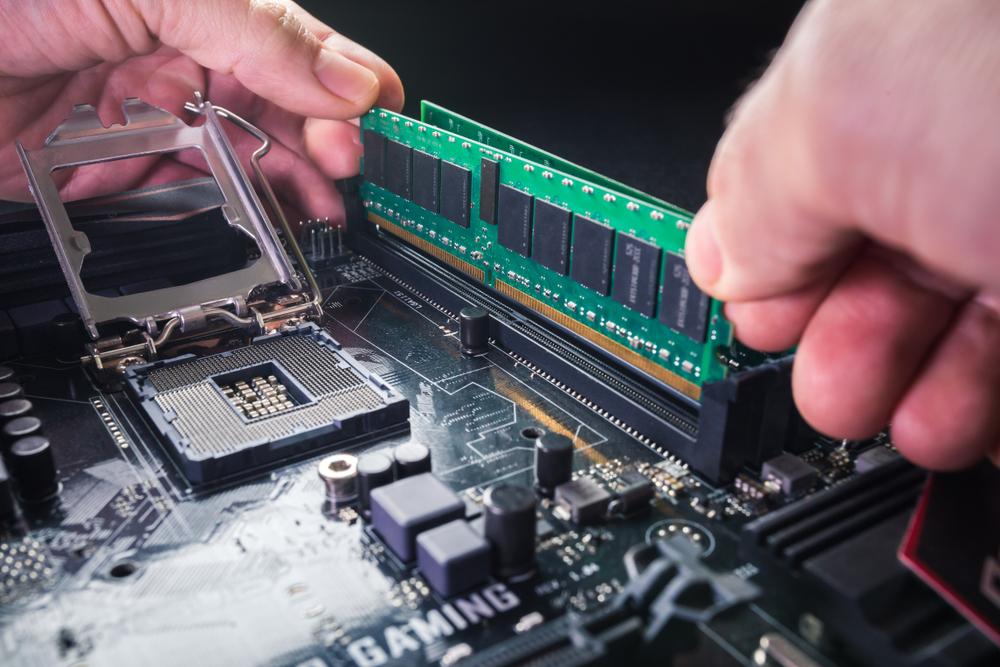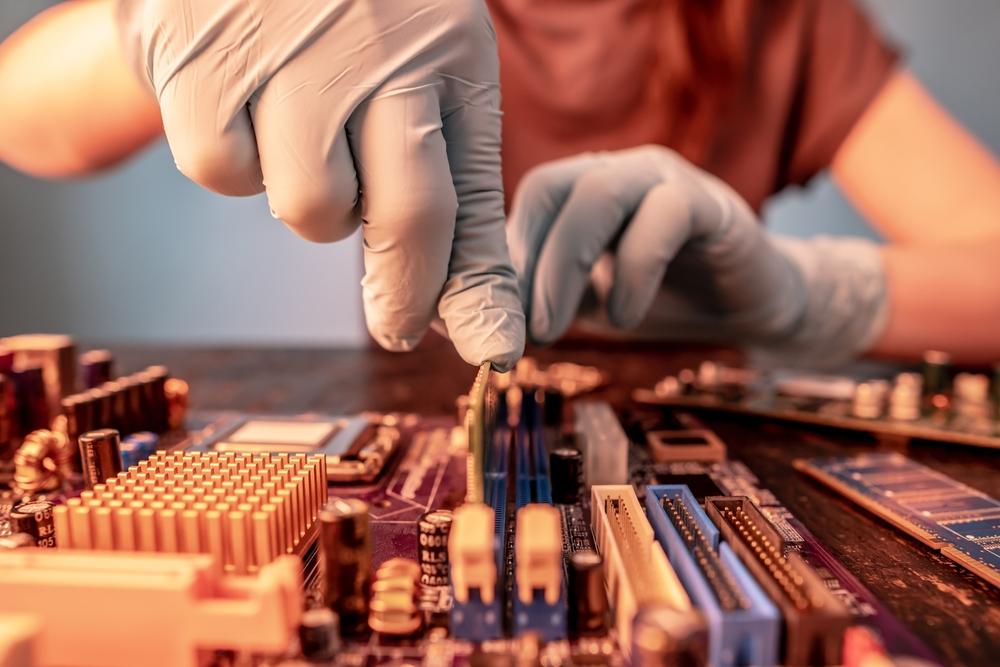A RAM memory upgrade can do for your computer what many of us wish we could do to our own brain — make it faster, more responsive, and, in general, improve performance. Choosing the right RAM and installing it correctly can provide a substantial boost to your PC by giving it more “working memory” to use as it coordinates the various tabs, applications, and processes that form our digital lives today.
However, there are some things you should know first. If you’re considering adding more RAM to your PC, here are six important factors that will help you get the most out of your upgrade.
- In most cases, upgrading RAM is relatively easy for anyone with basic PC building skills.
One big reason that adding more RAM is a popular upgrade? It’s pretty easy! Almost all desktop motherboards include RAM slots on the motherboard that make it simple to switch out old RAM modules and/or add more. Laptops are a little trickier, but RAM is still one of the only computer parts that many modern laptops allow to be upgraded.
Once you’ve located the motherboard RAM slots (and unplugged your PC, of course), it takes just a few minutes to unclip old RAM modules and insert new ones. Just be sure to read your motherboard’s manual before you start shopping for RAM. It’ll give you key information on what kinds of RAM you can use and how to install it.
- Carefully check the compatibility of your RAM modules with your system.
It’s always important to verify that your RAM modules are compatible with your motherboard. First, remember that RAM modules for desktops have a significantly different form factor than laptop RAM modules. Thus, make sure you’re buying DIMM memory for a desktop computer and SO-DIMM for a laptop.
In addition, there are all kinds of technical compatibility factors like voltage and timing that most people don’t want to worry about. Fortunately, your motherboard should have a qualified vendor list (QVL) of compatible RAM modules listed on the mobo manufacturer’s website. Choose from this list, and you won’t go wrong. Plus, most QVLs include hundreds of models, so you’ll have plenty of choices. Other kits may work fine, but choosing from the QVL is the safest and most consistent route to great RAM performance.
- 32GB RAM is increasingly relevant for both gaming and workstation PCs.
The capacity of the RAM you install is a huge factor in its performance. Workstation PCs for animation, graphic design, and music production need a minimum of 16GB RAM, and preferably 32GB. 16GB has been plenty for the last several generations of gaming PCs, but the dawn of innovations like 4K gaming has made 32GB relevant for higher-end gaming PCs.
Thus, if you’re looking for gold-standard performance on graphics-intensive games or creative software, 16GB is definitely the minimum to shoot for. 32GB is increasingly worth considering if you want to do design work or high-end gaming, although you can always go with 16GB now and upgrade again later — as long as your motherboard has enough memory slots.

- Unless you’re building a new PC, DDR5 isn’t a top priority.
Some of the latest and greatest RAM uses the recently-released DDR5 data standard, which offers potentially huge speed increases (and cost increases to go with them). However, the majority of motherboards and memory modules on the market still use the older DDR4 standard. DDR4 will remain relevant for some time to come, so if you don’t want to upgrade your mobo just yet, there’s nothing wrong with saving money on a DDR4 kit.
That calculus changes if you’re building a new PC. DDR5 will be everywhere soon, so buying a DDR5 motherboard and memory is a reasonable investment in future-proofing, even if it costs more. That’s especially wise if you’re trying to build around exciting new tech like AMD’s just-released AM5 chipset, which uses DDR5 RAM exclusively.
- Make sure to install your RAM correctly in a dual-channel configuration.
Modern motherboards usually include multiple RAM slots to allow users to install modules in a multi-channel configuration. That’s because dual-channel RAM setups — e.g., using two 16GB RAM sticks rather than one 32GB stick — can make it a lot easier and faster for the system to access the memory. Ultimately, that means better performance for your rig!
To make sure you’re getting all of these benefits, start by buying RAM modules in sets of two. (Most modules today come this way, but it’s worth noting.) When you install them, make sure to read your motherboard manual and find the correct slots to install the RAM. Many mobo models have four slots and want you to use a particular pair. Quad-channel setups do exist for high-end PCs, but consumer motherboards rarely support them. Even with four slots, dual-channel is generally still the best bet.
- For best performance, use just one brand and one model of RAM modules.
It can be tempting to mix and match RAM from different brands when you find a great deal, but most experts don’t recommend it — even if the specs look like they should be compatible on paper. Unfortunately, modules from different manufacturers often simply don’t play nicely together. They may work, but the differences in their internal components mean you may not get the same performance from mixed sets.

Moreover, even modules from the same brand can be a problem if specs such as clock speed and timing aren’t the same. All of your RAM will default to the performance specs of your slowest modules, which can mean you’re leaving speed on the table if you also have newer and faster ones. The best option is always to get it all in one go, from the same set. Then, if you want to upgrade later, grab a new complete set with better specs.